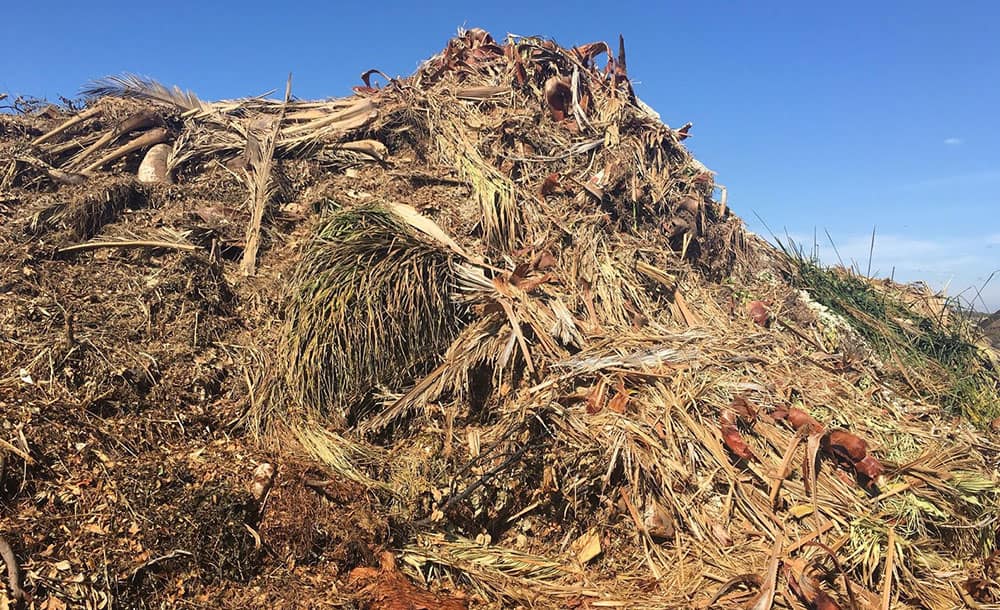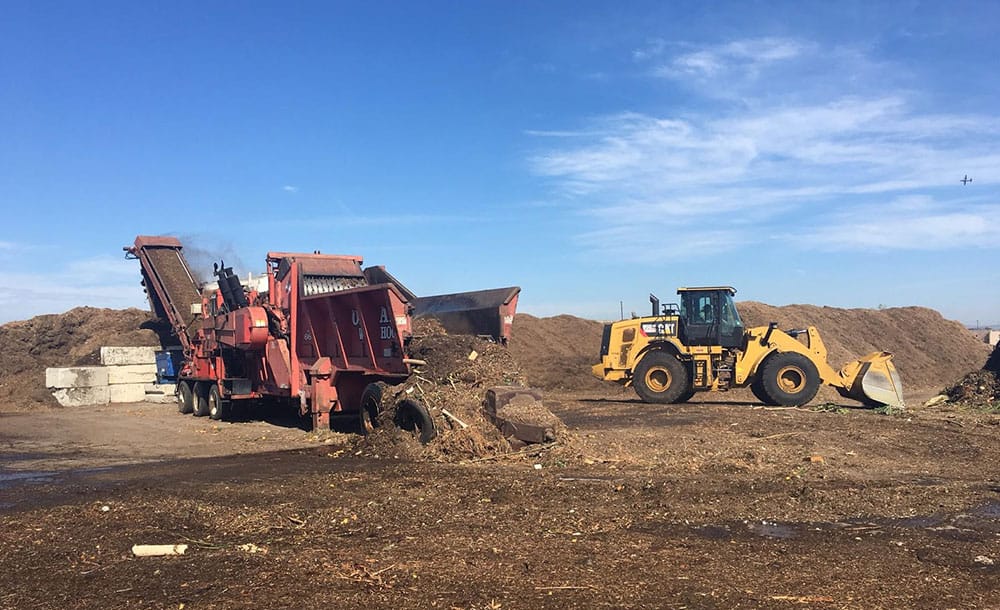Agromin was recently featured in a KCLU interview. It provides a excellent account of the organic recycling process.
To listen to the interview click here.
A transcript is below.
South Coast-Based Green Recycler That Works To Reduce Climate Change Is One Of Largest In California
By Debra Greene
Jan 5, 2018
Green waste like tree limbs and grass can produce an enormous amount of methane if left in a landfill. The methane emits greenhouse gases into the atmosphere. But, there’s a company based in the South Coast that’s working to reduce the effects of climate change by taking green waste and putting it back in the ground.
Large trucks arrive at the Agromin Processing Center in Oxnard. It’s one of the largest organic waste recyclers in California. The trucks unload waste from yards of residents throughout Ventura County – things like grass, tree branches and plants.
This green waste is sorted and cleaned and then it goes through a grinder.

“That’s a thousand horse power horizontal grinder. You don’t want to be caught in it. Basically, it grinds everything together so it makes like a homogenous mulch material that can be composted,” said Bill Camarillo, CEO of Agromin based in Oxnard.
He says its processing facilities throughout the state divert half a million tons of waste from landfills each year.
Camarillo says this Oxnard processing center – like Agromin’s other facilities – takes green waste that has been ground to mulch and composts it.
“The composting process gets the material up to 131 degrees to 160 degrees. The rest of the period of time is just allowing the material to mature like making wine,” he said.
Once it has been composted, it’s refined further. And the resulting material becomes the base ingredient for the more than 200 soil products that Agromin makes.
In one area of the processing center, there are large piles of what look like dirt. These are soil blends that each serve an important purpose, says Camarillo.
“So, that right there is called top dressing for lawns. That’s vegetable garden mix that you can put in your container blends. Premium blend is like a potting soil,” he said.

Gonzalo Delgadillo, who’s known as the “blender” is using a tractor to take the composted base material and add different ingredients to create these soil blends.
“They send me the recipe, and I make the mixes like the one I make right now.”
These recipes are created by Agromin’s chemist, Dr. Rick Wilson, who has a PhD in chemical engineering.
“I’m sort of the soil doctor. Write the prescription. What do you need to fix a particular challenge to maximize the performance of your agricultural operations or your landscaping operations,” he said. Using the composted base material, he creates recipes that add different sands and nutrients.
“We start with a mathematical model, a linear program, where you have all these inputs and outputs and you’re saying ‘I want to minimize the cost subject to these constraints’ and out comes the recipe,” Wilson said.
Residents, landscapers and even major theme parks like Disneyland in Anaheim and museums like The Getty Center in Los Angeles use Agromin’s products. But growers are the company’s biggest customers.
Martin Gramckow with Southland Sod Farms uses one of Agromin’s soil products for growing light turf grass.
“It provided the agronomic need, which is a media that had pore space. It’s relatively stable in terms of its breakdown. And it’s priced right,” he said.
Agromin is trying to close the carbon loop, says Camarillo.
“So, we’re really trying to be a climate change solutions company,” he said.
In the end, Camarillo says Agromin removes significantly more greenhouse gasses from the environment than it puts in.
“We produce about 5,000 metric tons of carbon to do what we do. But we actually remove 80,000 metric tons of CO2 out of the atmosphere. So, we’re like a carbon negative company. We are trying to reduce the amount of carbon that’s in the atmosphere through the plant material and trees,” he said.

